Ian Potter Foundation
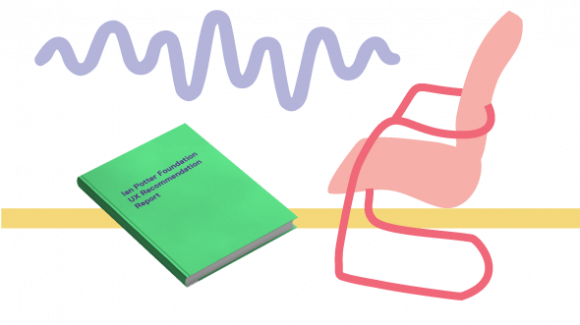
How our human-centered approach to discovery improved the Ian Potter Foundation’s application process for grant seekers.
Project Overview
The Ian Potter Foundation came to us with two challenges:
- To better understand their website content’s performance; and
- To develop a deep understanding of the needs of their site’s end users by identifying their key motivations, objectives, and pain points.
Ultimately, our goal was to help the Ian Potter Foundation give grant seekers the best chance of success by directing them through the website to the most appropriate funding applications.
Our human-centered approach to discovery placed the website's end users at the heart of the research. This enabled us to capture the voice of the end-user and weave it in through the project from start to finish.
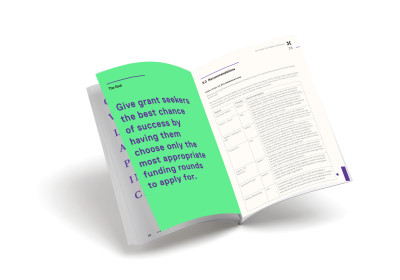
The Client
The Client
Ian Potter Foundation is one of Australia’s oldest philanthropic foundations supporting purpose-driven projects across the country in science, health, arts, and culture. It was established in1964 by Australian businessman and philanthropist, Sir Ian Potter (1902 – 1994), whose vision to encourage excellence and enable innovation by supporting not for profits is still in operation today.
The Ian Potter grants program supports talented Australian social entrepreneurs, visionaries, academics, scientists, researchers, artists, and teachers who are committed to creating “a vibrant, healthy, fair and sustainable Australia” for all.
Their Challenge
Their Challenge
Every year thousands of hopeful grant seekers submit grant applications to Ian Potter Foundation (“IPF”) which are reviewed internally and approved by committee members. It is widely acknowledged that applying for philanthropic grant applications is often difficult, time-consuming and confusing for grant seekers because funding criteria and terms vary broadly across the industry.
Valuable time and resources go into the application process in particular as grant seekers need clarification on the qualifying criteria. This information is gained by reaching out to the IPF team by phone and email – taking up a significant part of both the grant seeker’s and Fund manager’s time.
The IPF team was keen to better understand why they were receiving so many inquiries of this nature and to identify how their website content could better help visitors understand, self-select and apply for the most relevant grants.
The Solution
As part of this discovery engagement with the IPF, we delivered a high level UX Recommendation Report. A human centred approach was taken throughout the discovery project to ensure the research captured the voice of the end user.
The UX report outlined the key insights gathered during the discovery phase, which included user feedback gathered in a workshop with IPF staff and listening sessions with current grant seekers. It also included a content review (heuristic analysis) to identify areas of the website that were underperforming or difficult to understand.
The report included a detailed list of UX recommendations and tangible next steps so the IPF digital team could visualise a set of tasks that would improve the end users’ experience and enable the grant seekers to self-qualify, in turn, reducing the volume of support-related enquiries.
It also gave the IPF digital team assurance that the direction of the future website was the right one with the report acting as a valuable resource for future planning and strategic discussions with the IPF board.
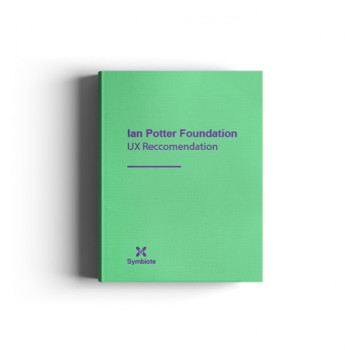
Our Process
UX Talk
"We interviewed a broad range of grant seekers as part of this UX research and discovery project. Once insights were gathered Trello was used to synthesise the findings and identify the core research themes - which added a lot of efficiency."
Rachel Kelly - UX/UI Designer - Ex Rummikub Pro

Rachel Kelly - UX/UI Designer - Ex Rummikub Pro
Read UX Process
UX process
Our approach to this challenge began and ended with a human-centered approach to discovery. We started with onsite listening sessions and workshops with staff and one-on-one interviews with grant seekers to gain a comprehensive understanding of the challenges at hand and allowed us to develop a series of user journey maps before we completed a structured content audit and analysis of the current website.
Applying these user-led UX methodologies enabled us to uncover quality end-user insights that informed the findings of our UX recommendation report. Once we had reviewed the IPF’s website content and grant application process, we completed more user testing to ensure our solution addressed the challenges identified in the first user feedback.
Listening Sessions with Grant Seekers
Individual listening sessions were scheduled with four grant seeker's and hosted at the IPF head office. These one-on-one sessions helped us deep dive into the grant seeker’s experience, including:
- Searching and selecting appropriate funding rounds
- The process of applying for grant funding
- Challenges faced when applying for a grant
- Ways in which they overcome these challenges
- What their dream grant application process would look like
Workshop with Stakeholders
Our preliminary research and workshop preparation helped us identify and cover the key themes we needed to explore. Conversations and insights were free-flowing throughout the morning which enabled us to better understand the experience of both the grant seeker and content author.
User Journey Mapping
Insights gathered from the stakeholder workshops and listening sessions illuminated end users’ needs, including the different starting points at which grant seekers start their application.
We developed journey maps as a data visualisation tool to showcase the process of the four most common user journeys. These maps showed grant seekers’ step by step decision making processes. This highlighted the importance of grant seekers understanding the grant criteria and qualifying information quickly in order to be able to quickly self-access their eligibility.
Content Audit and Heuristic Analysis
We completed a content audit of the current IPF website to ensure our UX Recommendations Report comprehensively addressed the challenge at hand. We used principles from Jakob Neilsen’s 10 usability heuristics for user interface design philosophy and revealed a detailed list of recommendations and opportunities for our client to consider.
Key recommendations included:
- Clarifying terminology throughout the website
- Improving language consistency
- Adding clear calls to action on each page
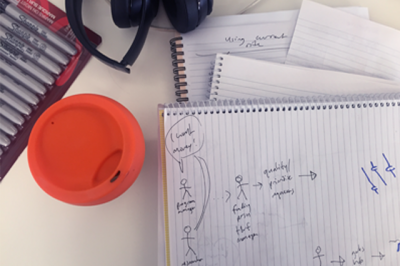
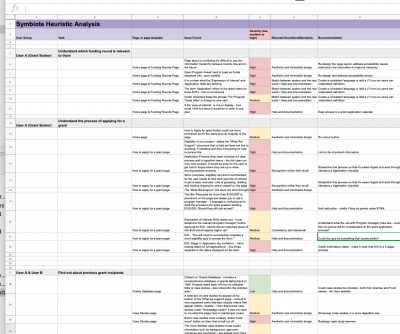
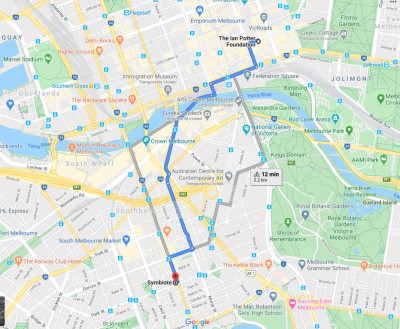
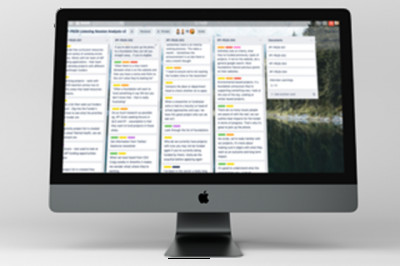
UX Summary
We use a variety of UX techniques to uncover and apply user led insights to the solutions we create and deliver.
Discover more about the UX services we offer by clicking on the button below.
UX Research tasks delivered as part of this engagement:
- Listening sessions with end users
- Stakeholder workshop
- User Journey Mapping
- Content Audit
- Heuristic Analysis
- UX recommendations report
Key Takeaways
Our research revealed a list of key findings that informed our UX Recommendation Report. Using design thinking we applied ‘How Might We’ statements to each of the key findings, which acted as a springboard when brainstorming solutions and ensure a human centred approach was retained throughout the engagement.
The key breakthrough for this challenge was learning that different grant funders used common terms differently and this created mass confusion for grant seekers. Even when language is specific, some terms were misinterpreted by grant seekers which led to calls and emails seeking clarification from staff, or inappropriate applications.
So we asked, how might we ensure grant seekers understand the terminology being used on the IPF’s website?

